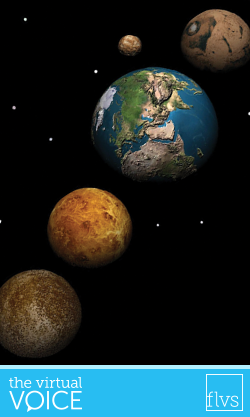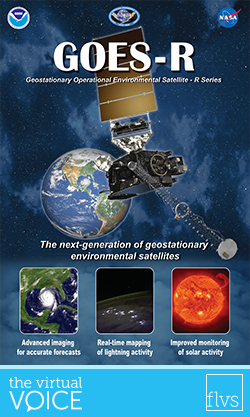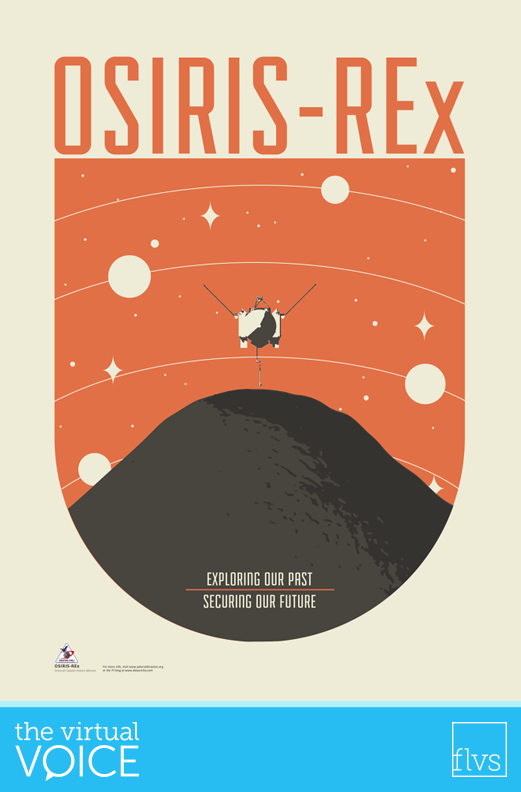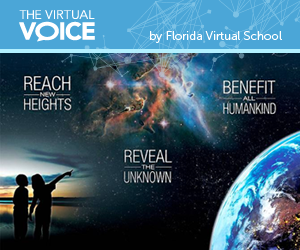Astronomy
Aliens and Explosions
By Guest Blogger on March 30th, 2017
This post was written by FLVS student Sarah Weyand about her award-winning research in astrophysics.
 My science fair journey began about a year ago.
My science fair journey began about a year ago.
I was approached by a Harvard graduate who wanted to mentor a high school senior in an astrophysics and computer science research project.
I knew nothing about astronomy and I didn’t know a single programming language, but I love space and I plan to major in computer science in college. Naturally, I said yes. This project has taken me to the Science Talent Search, the Indian River Regional Science and Engineering Fair, and, now, the State Science Fair.
My project is titled Aliens and Explosions: How Supernovae Affect the Habitable Zones of Exoplanets.
The purpose of the project is to calculate the percentage of exoplanets, a planet that does not orbit our Sun, that would no longer be in the habitable zone of their host star due to a supernova, the explosive death of a massive star. Continue reading
FLVS Attends GOES-R Satellite Launch
By Florida Virtual School on December 7th, 2016
 On Saturday, November 19, I had the privilege of watching the GOES-R weather satellite launch from Kennedy Space Center.
On Saturday, November 19, I had the privilege of watching the GOES-R weather satellite launch from Kennedy Space Center.
Now you may be wondering what GOES-R stands for. It’s the Geostationary Operational Environmental Satellite, a satellite system that orbits the earth and sends data back to National Weather Service computers. The R indicates what number or version the GOES satellite is on, so there have already been versions A-R. GOES-S is slated to launch next year and is the twin to GOES-R.
Of course, weather satellites get launched all the time, so why would this one be any more special than the others?
Well, right now we receive images of satellite scans every 30 minutes or so. The GOES-R satellite will provide data at least every five minutes, and in some circumstances every 30 seconds! So not only will it be five times faster than current weather satellites, but it will also gather three times more data and it will have four times better resolution. Continue reading
To Bennu and Back!
By Florida Virtual School on September 29th, 2016
 Hello FLVS peeps!
Hello FLVS peeps!
I had the distinct honor of representing FLVS at the OSIRIS REx rocket launch a few weeks ago.
Now if you’re wondering what exactly that means, OSIRIS REx stands for NASA’s Origins, Spectral Interpretation, Resource Identification, Security-Regolith Explorer. That’s a mouthful, right?
In a nutshell, NASA is sending a spacecraft to an asteroid named Bennu. Once it reaches Bennu (after a trip lasting two years), the spacecraft will orbit the asteroid for about a year, find the perfect place to collect about 80 grams of the rock, and head back home, arriving back to Earth in 2023.
It won’t actually land on the asteroid, but instead hover over it – and with the help of Canada and their amazing knowledge of spacecraft arms – will grab a small sample. (To put this in perspective, 80 grams is about the equivalent of 80 Skittle candies.)
So why are we going to Bennu? Continue reading
Joining Mars MAVEN Ambassador Program
By Florida Virtual School on August 22nd, 2015
 Have you ever just watched the last five minutes of a movie and tried to piece the rest of it together, backwards?
Have you ever just watched the last five minutes of a movie and tried to piece the rest of it together, backwards?
Crazy idea, right? It’s one that Mars scientists are doing on the MAVEN mission.
MAVEN stands for Mars Atmosphere and Volatile EvolutioN and the goal is to try and figure out what happened to Mars’ atmosphere millions of years ago.
Scientists know Mars at one time resembled Earth, with an atmosphere and flowing water. With MAVEN, they will attempt to work backwards and find out how the atmosphere and dynamo was lost.
I was lucky enough to be accepted into the MAVEN Ambassador Class of 2015 and I attended a week-long workshop with 29 other teachers to find out more about this cool mission. Continue reading
FLVS Attends SpaceX CRS-6 Cargo Launch Mission
By Guest Blogger on April 23rd, 2015
On April 12-13, 2015, FLVS had the privilege of going on a behind-the-scenes tour at Kennedy Space Center and sharing the experience with our students.
During the virtual field trip, followers of our FLVS Twitter account were able to tune in live for video streaming made possible with the new social app, Periscope.
While anyone can watch streams broadcasted via Twitter on their desktop or mobile device, users with the mobile Periscope app were also able to post questions in real time. We were honored to have viewers from around the world engage with us throughout the event! Continue reading
Attending the State of NASA
By Guest Blogger on February 13th, 2015
 I recently had the privilege of attending the State of the NASA address given by NASA Administrator Charles Bolden.
I recently had the privilege of attending the State of the NASA address given by NASA Administrator Charles Bolden.
The day was full of exciting news and details about NASA’s 2016 budget, captivating science, technology, engineering, and math enthusiasts across the nation.
The SpaceX Dragon, Orion spacecraft, and Boeing CST-100 were on display behind Bolden as he addressed plans for future missions beyond low Earth orbit, with destinations including Mars and Europa. Bolden also described the excitement surrounding student involvement in NASA innovation and STEM research.
Becoming a Student Again with Astronomical Research
By Florida Virtual School on January 30th, 2015
 Last year I was honored to be chosen as a NITARP teacher.
Last year I was honored to be chosen as a NITARP teacher.
NITARP, short for the NASA/IPAC Teacher Archive Research Program, pairs teachers with astronomers from Caltech and NASA, and allows the teachers to do authentic astronomical research.
I thought this program would be something that was a little out of my comfort zone, as I only had classroom experience (like most science teachers), but I decided to apply anyway as it would be an educational experience. To my surprise, I was one of eight teachers that was accepted out of hundreds of applicants.
The teachers were split up into two teams, each with an astronomer to lead them. My team had educators from Boston, Colorado, and California and my astronomer, Varoujan Gorjian, was from Caltech and NASA. Continue reading

